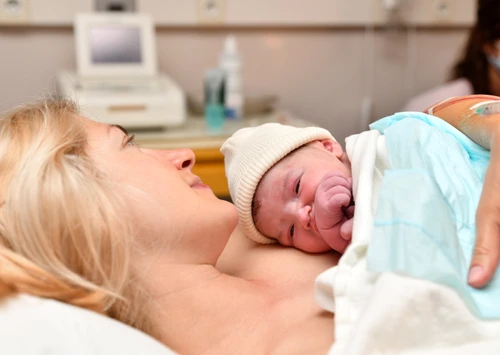
If you want to become a mother or are already pregnant for the first time, it is possible and normal to ask yourself many questions and to have feelings of fear related to the act of birth. And the painless way to bring the baby into the world is one of the most important aspects to consider.
In general, if you do not have certain health problems or if the baby is not in danger, natural birth is recommended. However, although the woman has the physiological resources to allow her to give birth naturally, many of her fears will negatively influence the calm and safe environment she needs. Below are some ways to get through natural birth well and without pain.
Changing the perception of pain
If you change the way you look at the pain associated with childbirth, by understanding its purpose, you will give the brain the opportunity to reduce the perceived intensity. The idea is the following: the pains of birth can be great, but they are unique and have a purpose, i.e. bringing a new being into the world. The process of birth takes place in stages, with increasing pain intensity. The pain is worse during contractions, after which, in between, its level decreases. For some women, the onset of labor is the most painful stage, while for others it is the moment of expulsion. Most midwives advise women giving birth not to fight the pain, but to accept it.
Epidural anesthesia
Natural birth with an epidural is an option that many women are afraid of and that is often resorted to at the last minute, to reduce too intense pain. And yet, epidural anesthesia remains, for a century, a major advance in reducing pain during childbirth. This is not done without precautions, a specialist doctor determining whether or not there are contraindications. The injection itself is not painful, and the main side effects are migraines, headaches or back pain, which usually disappear on their own after a few hours to a day. Epidural anesthesia, as the name suggests, is performed in the epidural space, namely the one that surrounds the dura, the covering that protects the spinal cord. Not being in contact with the marrow, in principle, the risk of paralysis is absent. Administered correctly, the epidural only reduces the pain caused by contractions, which, however, do not disappear, allowing the mother to remain active.
Hormone mechanics
A series of specific hormones are produced in greater quantity during labor. Among the hormones involved in the birth process is oxytocin (the love hormone) which, among other things, causes the uterus to contract to expel the fetus, helps it to recover afterwards, causes the removal of the placenta and supports lactation. Also involved in the process are endorphins, known as pleasure hormones, but which, in this case, are a natural anesthetic, prolactin, which triggers and supports lactation, and adrenaline, which gives the woman the strength to give birth. At the moment of birth, all these hormones have a decisive role, to combine so that the woman can give birth to the child.
Water use
For many women, staying in the water during labor and birth helps them manage their pain. Water has a relaxing and analgesic effect during childbirth, the body seems lighter, the stomach less bulky, and the contractions less painful, while the cervix is easier to dilate. You can take a hot bath (37°) at home at the beginning of labor – or at the maternity hospital, if possible. The actual birth in water is recommended only if the environment is specially designed for this purpose.
Childbirth is automatically associated with suffering, but with the help of the above methods, you can make this process as painful as possible. The adventure of natural birth can be a minimally painful one if you prepare physically and mentally ahead of time.
Photo source: Shutterstock






































